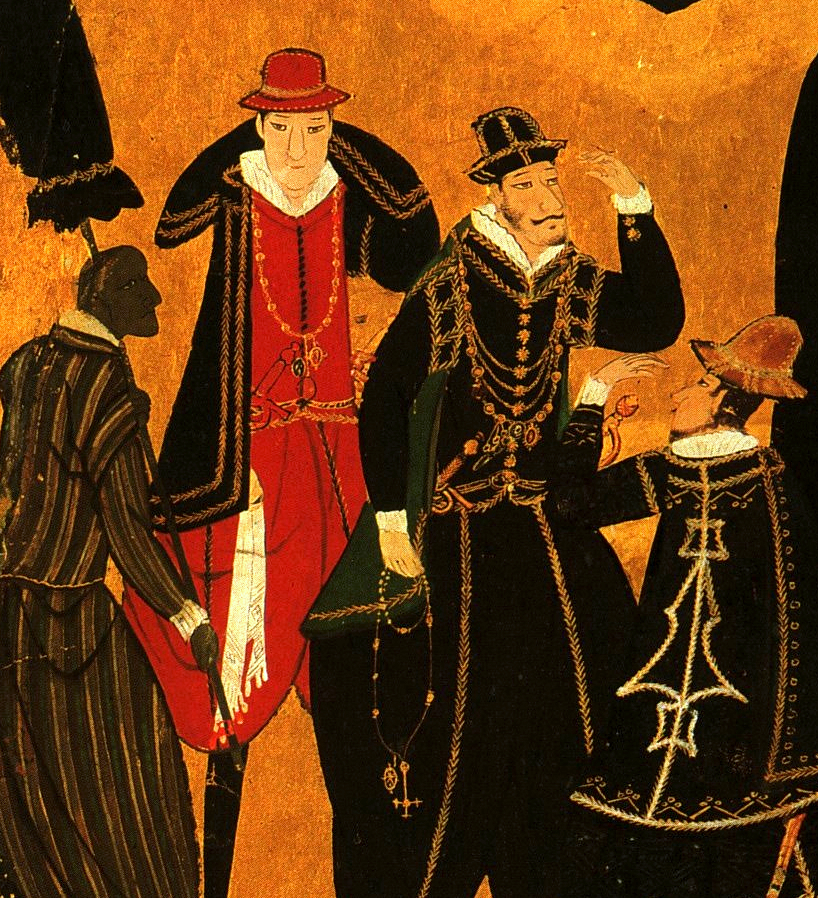Week 1: A Brokered World? Go-Betweens and Spaces of Mediation
The early modern world was characterised by connections, exchanges and mediations on an increasingly global scale. This week we take a first look at the concept of 'go-between' and the kinds of groups and individuals that fall under this rubric. We will think about the types of spaces in which different kinds of intermediaries operated, and we consider the benefits and limitations of focusing on go-betweens as a way to understand the early modern world. LINK.
Required Readings
Andreas Höfele and Werner Koppenfels (eds.), Renaissance Go-Betweens: Cultural Exchange in Early Modern Europe (Berlin: Walter de Gruyter, 2005), 'Introduction', pp. 1-14. Link.
Kapil Raj, 'Go-Betweens, Travellers, and Cultural Translators', in: Bernard Lightman (ed.), A Companion to the History of Science (Chichester: John Wiley, 2016), pp. 39-57. Link.
Recommended Readings
Simon Schaffer, Linda Roberts, Kapil Raj, and James Delbourgo (eds.), The Brokered World: Go-Betweens and Global Intelligence, 1770-1820 (Sagamore, MA: Science History Publications, 2009), 'Introduction', pp. ix-xxxviii.
Subrahmanyam, Sanjay, 'Between a Rock and a Hard Place: Some Afterthoughts', in: Schaffer et al., The Brokered World, pp. 429-440.
Seminar Questions
- How can one define an early modern “go-between” and who or what counted as such?
- What does the perspective of the go-between offer students of the early modern period?
- What are the limitations of the go-betweens perspective?
- How does the perspective of the go-between challenge Eurocentric narratives?
- Is there a present-day relevance in studying go-betweens?
Further reading
Bentley, Jerry H., Sanjay Subrahmanyam, Merry E. Wiesner-Hanks, The Cambridge World History, Volume VI: The Construction of a Global World, 1400-1800 (Cambridge: Cambridge University Press, 2015).
Bitterli, Urs, Cultures in Conflict: Encounters Between European and Non-European Cultures, 1492-1800, trans. Ritchie Robertson (Stanford University Press, Stanford, CA: 1989).
Dursteler, Eric, Venetians in Constantinople: Nation, Identity and Coexistence in the Early Modern Mediterranean (Baltimore: John Hopkins University Press, 2006).
Curtin, Philip D., Cross-Cultural Trade in World History (Cambridge: Cambridge University Press, 1984).
Greene, Molly, A Shared World: Christians and Muslims in the Early Modern Mediterranean (Princeton, NJ: Princeton University Press, 2000).
Huntington, Samuel, The Clash of Civilizations and the Remaking of World Order (New York: Simon & Schuster, 1997).
Maalouf, Amin, trans. Barbaray Bray, In the Name of Identity: Violence and the Need to Belong (New York: Arcade Publishing, 2000).
Ogborn, Miles, ‘“It’s not what you know…”: Encounters, Go-Betweens and the Geography of Knowledge’, Modern Intellectual History 10.1 (2013): 163-175.
Parker, Charles H., Global Interactions in the Early Modern Age (Cambridge: Cambridge University Press, 2010).
Pratt, Mary-Louise, Imperial Eyes: Travel Writing and Transculturation (2nd ed. New York: Routledge, 2007).
Subrahmanyam, Sanjay. Three Ways to be Alien: Travails and Encounters in the Early Modern World (Waltham, MA: Brandeis University Press, 2011).
Trivellato, Francesca, Leor Halevi, and Cátia Antunes (eds.), Religion and Trade: Cross-Cultural Exchanges in World History, 1000-1900 (Oxford: Oxford University Press, 2014), ‘Introduction: The Historical and Comparative Study of Cross-Cultural Trade’, pp. 1-23.
Richard White, The Middle Ground. Indians, Empires, and Republics in the Great Lakes Region, 1650-1815 (2nd ed. Cambridge: Cambridge University Press, 2011).

